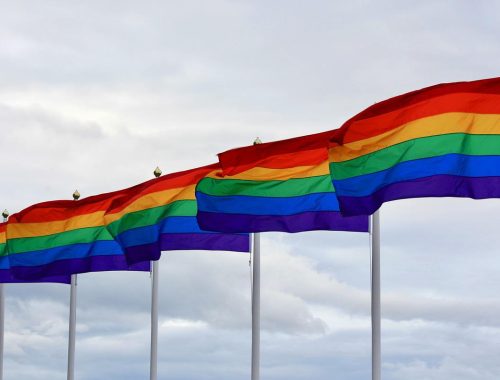
A look at an LGBTQ family through the years
The idea of gay parenting might not stir up as many emotions nowadays as it used to, but it still awakes certain controversy and curiosity. Is a same-sex couple able to raise a child without influencing his or her sexuality? Can the typical gender roles be taken upon by individuals of the opposite sex? Let´s see how the perception of the LGBTQ community and their ability to become parents have evolved throughout the years.
Acceptance of the LGBTQ parenting – historical evolution
Even though the first cases of gay couples requesting legal permission to adopt children go back to the era of WWII, it wasn´t until the 1970s that the first American states started granting custody rights to transgender, lesbian, and gay parents. Some of the key events that have laid a path for LGBTQ families include:
- An adoption license for Bill Jones, a single father, gay, granted in 1968 by the State of California. Years later he shared, however, that his social worker had recommended him not to mention the fact that he was gay.
- New York becoming the first state in the US to stop refusing adoption applications based only on the homosexuality of the applicants.
- First joint-adoption rights granted to a gay couple in California (1979).
- New Jersey becoming the first state to formally allow gay adoptions (1997).
- Florida being the last state to overturn a ban on gay and lesbian couples adopting (2010).
- Equality of marriage rights declared federal law (2015).
In the case of lesbian couples, the opportunity of becoming parents lies not only in adoption but also in pregnancy. Although informal home inseminations have been going on forever, it wasn´t until 1982 that the Sperm Bank of California started offering its services to queer clients.
LGBTQ family – current trends
The LGBTQ population in the US is constantly growing. According to the most recent Gallup poll, 7.1% of Americans self-identify as LGBTQ, which is twice as much as 10 years ago.
Interestingly, sexual orientation seems to be directly related to age, as one-fifth of the youngest generation Z declare themselves LGBTQ.
As the country offers greater equality of rights and a more tolerant social context, more and more LGBTQ couples decide to become parents. The LGBTQ Family Building Survey conducted by Family Equality Council shows that plans to become parents are no longer so tightly related to sexual orientation, especially in younger couples.
The gap between LGBTQ Millennials who want to grow their families and straight couples from the same age group is only 7%. Truly inspiring!
What’s more, pregnancy and adoption have ceased to be perceived as the only options for gays and lesbians to have children. As shown in the graph below, a growing number of LGBTQ couples turn to other alternatives, such as foster care or assisted reproductive technology, something that used to be almost unheard of in their case.
Children of LGBTQ couples and their mental health
The biggest concern related to whether it is a good idea to give gay couples the right to raise children has always been the impact it might have on their mental health.
Does having two mothers or two fathers really “ruin kids for life”? As it turns out, it does not. Being a queer parent does not necessarily imply your children are going to inherit your sexual orientation. Lynne Elvins, a lesbian mother of an adopted child deals with the myths of gay adoption in her TED talk:
A huge myth buster is also The National Longitudinal Lesbian Family Study carried out over a period of 30 years (from conception into adulthood). Its findings show no significant difference in the mental health as well as behavioral and emotional functions of the people raised by LGBTQ parents and those raised by straight parents.
Challenges for LGBTQ families
Being gay and opting to have children is not free of difficulties, even in 2022. Some of the main challenges that the LGBTQ families face include:
- Health insurance – sexual minorities are twice as likely as straight people not to have any kind of health coverage, which makes fertility treatment very costly.
- Paid parental leave – there is still no standard federal law that grants a paid leave to all parents (married or unmarried) and many company policies related to this issue leave certain LGBTQ family structures out.
- Bullying and discrimination – despite certain improvements, queer people (especially trans) and their children in the US are still subject to discrimination when it comes to access to school, participation in sports activities, etc. Only 18 states have developed comprehensive guidance on the LGBTQ community and their rights.
- Income differences – according to the study on LGBT Poverty in the United States by the Williams Institute, 22% of the LGBTQ community lives in poverty (29.4% for transgender people) as the minimum wage is not enough to cover the basic needs of their families.
Is it easier to be a queer parent nowadays than it used to be in the past? Absolutely. The growing number of sexual minorities seeking to have a child proves that better than any formal law or policy. That doesn’t mean, however, that LGBTQ parenting in 2022 is free of its many challenges. There still is a long way to go in terms of equality of opportunities and the social perception of LGBTQ families.
You May Also Like

Welcome to LGBTQ Parenting Connection!
February 5, 2022
Gay parenting in different countries
April 27, 2022

